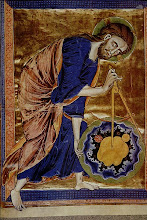




g
Tuesday, 29 Sept 2009 Feldkirch, Austria (very close to Switzerland)
[I apologize about weird locations for photos - I'll learn the system better back home.]
ID's: top two = fortress + its dial
next two = garden + ovens
bottom two = 2 views of 15th c. dial
I’m sitting outside at a café in the small, main street (but only pedestrians) of Feldkirch, leisurely having a lunch and a couple of beers, writing postcards, etc. There’s of course a sundial above me just over my right shoulder and to my left a church clock chimes every quarter hour. This is really the first time on this trip that I’ve not been “busy” trying to get somewhere, find dials (current count is 151 over the past ten days), eat, find a hotel, etc., etc. The weather continues to be ideal at sunny and ~65 deg F, and today my Austrian dialling friend Helmut Sonderegger has shown me many in this area, several of which he has been involved with. In fact, the reason I have this break is that he needed to attend a meeting to decide on the winner of a competition for a new meridian-line type dial, to be installed in a small plaza in front of a church. The dial will honor Rheticus, native of Feldkirch and pupil and supporter of Copernicus in the 16th century.
On Sunday I experienced a singular day in terms of its range of emotions and commentary on the human condition as expressed in central Europe.
First, to the east of Linz (Hitler’s hometown) I drove on small roads through Austrian villages, catching a few dials by random or by specifically searching for listings in the Austrian sundial catalogue – for instance, one was dated 1486 and in very good shape, painted on the steeple of the small parish church of Pierbach [two photos]. Next, I visited the infamous Nazi concentration camp of Mauthausen, which was sobering and disturbing. During WW II there were gas chambers and men dying every day from disease and malnutrition and cruelty [see photo of cremation oven]; the prisoners were not only Jews, but also Communists, Soviet POWS, and political dissidents of all stripes. Mauthausen is most known for its rock quarry, which was entered from the camp above by a long, roughly-hewn stone stairway, with steps typically ~15 inches high. Men would exit also via this stairway, carrying rocks, and it became known as the Todestiege (“Stairway of Death”) because while ascending they would often die from exhaustion and being beaten by the SS guards. Today the (rebuilt) stairway can still be seen, along with the quarry (no longer used) and towering cliff where many committed suicide or were pushed off by the guards.
After that visit, at about 6 pm I arrived in Salzburg, known for two key events in its 1300-year history: Mozart’s birth (1756) and The Sound of Music filming (1965) [photo shows the Mirabellegarten – think “Do, a deer, a female deer…..]. I happened to arrive on the last night of the annual celebration of St. Rupert’s first settling the area in the 8th c., so the old-city area was jumpin’ with carnival rides, many folks in traditional costume (similar to Bavarian, but don’t call them Bavarian!), beer halls, etc. I observed the goings-on in one beer hall/tent for ~30 minutes – a lively brass band, lots of drunk people standing on the tables, clapping and singing along, etc. The recent pop song "I Love Austria" (lyrics are in German except for that phrase) has become an unofficial national anthem and was sung with particular gusto. [The town clock here in Feldkirch just chimed four times.]
Still on that amazingly varied Sunday, I attended a chamber music concert on the top floor of the Festung Hohensalzburg (the fortress/castle on a steep hill immediately above the city) [photo from below, plus another of a great dial on the castle]. Occupied primarily by powerful Archbishops whose wealth came from nearby salt mines (hence the town’s name), the castle still has many well-appointed rooms, one of which we were in as the program opened with Dvorak’s “American” string quartet. I was transported into sublime realms by the excellent musicians and the regal room. They also played Mozart and Haydn, but nothing topped the Dvorak.* And the final bonus: during the intermission, a gorgeous fireworks display went off (for the festival) and it seemed like we were in the middle of it, for many of them were launched from our castle location and they were extremely close (such closeness would not be allowed by US fire departments). There were gorgeous pyrotechnic effects that I hadn’t seen before. Several times, however, I thought of the explosions of war, even though I have luckily never experienced that myself – Salzburg Cathedral, for instance, was extensively damaged during World War II.
What a day!
-----------------
Einstein once referred to his situation in Berlin during the WW I era as like that of a person in a beautiful, large bed that unfortunately was also infested with bedbugs. He was referring to the world’s best physics community and the high German culture of music, etc., heavily tarnished by the militarism and nationalism that he deplored.
------------
* This is the fourth such moving musical experience I’ve had in Europe. The others were: Beethoven’s warhorse Fifth Symphony in Berlin (2001), a Ravel piano concerto in Ravenna (2005), and Strauss’s opera Salome in Innsbruck (2006).


No comments:
Post a Comment